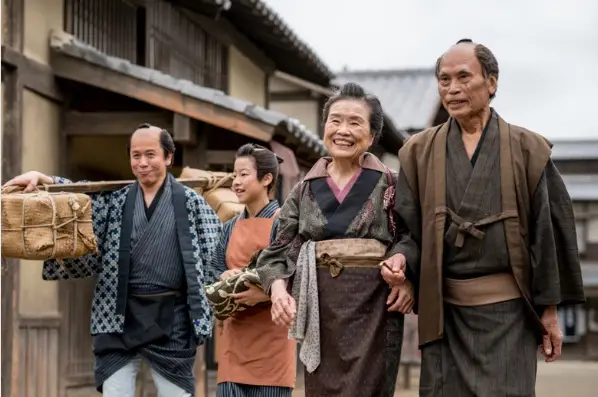Komik Hisashiburi ni Jikka ni Kaettara Otouto ga Ts Shiteta: A Tale of Family Bonds
Welcome back, dear readers! Today, we embark on a heartwarming journey through the intricate fabric of Japanese culture, exploring the deep-rooted significance of family relationships. Dive into a captivating tale that will leave you reflecting on the bonds that tie us together, inspired by the story “Komik Hisashiburi ni Jikka ni Kaettara Otouto ga Ts Shiteta,” which translates to “When I Returned Home After a Long Absence, My Younger Brother Had Changed.”
The Importance of Family Relationships in Japanese Culture
In Japanese culture, the family holds a special place of utmost importance. The concept of “kazoku” embodies values of love, respect, and loyalty, which are deeply ingrained in society. Family relationships are seen as blood ties and an essential support system that shapes individuals from birth.
From an early age, children in Japan learn the significance of maintaining strong bonds with relatives, extending beyond immediate family to include grandparents, aunts, uncles, and cousins. Gathering for important occasions like holidays and festivals is a common practice to celebrate these cherished relationships.
The emphasis on family unity extends to caring for elderly parents or grandparents. It is considered a moral duty for adult children to support and care for their aging relatives, strengthening familial ties and ensuring each member’s well-being.
While tradition plays a significant role, modern influences have also impacted these relationships. Younger generations may face challenges balancing traditional expectations with individual aspirations. Despite these changes, core values remain intact: mutual respect, open communication, and prioritizing loved ones. Maintaining harmonious family connections brings joy and stability, which many strive for in today’s fast-paced world.
Returning Home After a Long Absence
Returning home after a long absence is both exciting and nerve-wracking. The anticipation builds as you return to familiar surroundings, wondering how things have changed in your absence. Will everything be the same? Or will there be new surprises?
As the protagonist of our story returns home after an extended period, they feel excitement and nervousness. The journey back is filled with memories and emotions, making them wonder how their relationships may have evolved during this time apart.
Finally arriving at their destination, they are greeted with open arms by family members eagerly awaiting their return. Hugs are shared, tears are shed – a moment of pure joy and relief. It’s as if time has stood still in some ways yet moved forward in others.
Meeting the Protagonist and Their Younger Brother
The protagonist is eager to see their younger brother again and curious about how much has changed since they last saw each other. Walking through the front door of their childhood home, memories flood back—playing in the backyard together, late-night conversations under the stars.
But as they catch sight of their younger brother for the first time in years, there’s an undeniable shift in dynamics. The once inseparable siblings now seem like strangers trying to navigate unfamiliar territory. The tension hangs thickly in the air as they attempt to find common ground again.
The Changing Dynamics Between Brothers
The dynamic between the two brothers is a complex and ever-evolving relationship. As time passes, their roles and interactions can shift and change unexpectedly. Once close-knit siblings who shared secrets and dreams, the passage of time created distance between them. Their lives took different paths – one pursuing a career abroad while the other stayed behind to tend to familial responsibilities. The once inseparable bond weakened with each passing day spent apart.
As they reunite under one roof again, an undeniable tension is lingering in the air. The conversations that were once effortless now feel strained and forced. It’s as if they’re trying to navigate unfamiliar territory instead of picking up where they left off.
But amidst this initial awkwardness lies an underlying desire for connection. Both brothers yearn for that sense of familiarity and closeness lost over time. Slowly but surely, they begin opening up about their respective journeys – sharing stories of triumphs, failures, heartbreaks, and successes.
Through these conversations filled with vulnerability and honesty comes a newfound understanding of each other’s struggles and growth. They realize that despite their diverging paths, their core values remain intact – love for family being at the forefront.
Discovering What the Younger Brother Has Been Up To
As the protagonist returns home, they are eager to reconnect with their younger brother. The dynamic between the two siblings has always been unique, filled with playful banter and shared adventures. But now, after being apart for so long, there is an air of mystery surrounding what the younger brother has been up to.
The reunion is filled with excitement and anticipation as they catch up on lost time. The younger brother’s artistic talent shines through every page of his comics – each panel telling a story of resilience and creativity. It’s inspiring to see how he poured his emotions into his work and transformed them into something beautiful.
Both brothers learn valuable lessons about family bonds and forgiveness through these revelations. They realize that communication is essential – not just talking about everyday events but truly understanding one another’s dreams and aspirations.
Discovering what the younger brother has been up to creates a deeper appreciation for each other’s journeys and reminds them of the importance of unconditionally supporting one another.
Lessons Learned About Family, Forgiveness, and Communication
While returning home, our protagonist discovers valuable lessons about family, forgiveness, and communication. As they reunited with their younger brother, the dynamics between them began to shift in unexpected ways.
The first lesson that unfolded was the importance of family bonds in Japanese culture. It became evident that these connections hold a significant place in one’s heart despite time and distance. The reunion brought forth a newfound appreciation for the unbreakable bond shared by siblings.
Forgiveness emerged as another crucial theme during this experience. Past misunderstandings and conflicts were put aside as both brothers realized the futility of holding onto grudges. They embraced each other’s growth and acknowledged that forgiveness is liberating and essential for healing wounds.
Regarding communication, it became apparent that words alone are sometimes insufficient to convey emotions or bridge gaps created over time. Nonverbal cues such as gestures and expressions played an integral role in understanding each other on a deeper level. Through open conversations filled with empathy and active listening, miscommunications were resolved.
Conclusion
This heartwarming tale of “Komik Hisashiburi ni Jikka ni Kaettara Otouto ga Ts Shiteta” explores the transformative power of reconnecting with loved ones after a long absence. Through our protagonist’s journey, we see how time apart can change the dynamics between siblings. Despite past misunderstandings or conflicts, the bond between brothers remains resilient. Although initially frustrating to our protagonist, the younger brother’s actions ultimately remind us that growth and personal development occur even when we are not together.
This story teaches us valuable lessons about forgiveness and communication within a family setting. It reminds us that love and understanding can bridge any gap no matter how much time has passed or what differences may arise. By embracing vulnerability and open dialogue, we can rebuild connections that withstand the test of time.
“Komik Hisashiburi ni Jikka ni Kaettara Otouto ga Ts Shiteta” is a testament to the enduring strength of familial ties. It encourages us to cherish those moments when life brings us back together with our loved ones, reminding us to seize these opportunities for reconnection and reconciliation. You can also read about Im Being Raised by Villains – Chapter 36 by going through that link.
FAQs
What is the main theme of “Komik Hisashiburi ni Jikka ni Kaettara Otouto ga Ts Shiteta”?
The main theme is the importance of family relationships and how time and distance can change dynamics, yet the bond remains strong.
How does Japanese culture influence family relationships?
Japanese culture highly values family, emphasizing respect, loyalty, and care for all family members, including extended relatives and elders.
What lessons can be learned from the story?
The story teaches lessons about forgiveness, the importance of open communication, and the enduring strength of family bonds.
How do the brothers reconnect after a long absence?
The brothers reconnect by sharing their journeys, being open and honest about their experiences, and embracing vulnerability and understanding.
Why is forgiveness important in familial relationships?
Forgiveness is crucial as it helps heal past wounds, allowing family members to move forward and strengthen their relationships.






